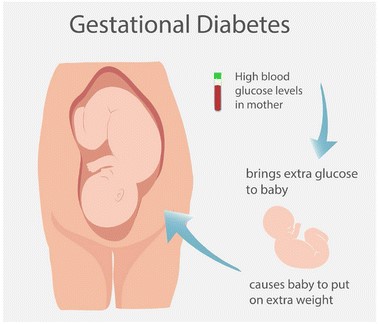A nurse is assessing a full-term newborn upon admission to the nursery. Which of the following clinical findings should the nurse report to the provider?
Transient circumoral cyanosis
Single palmar creases
Rust-stained urine
Subconjunctival hemorrhage
The Correct Answer is B
A. Transient circumoral cyanosis: This is a common finding in newborns and typically resolves without treatment.
B. The nurse should report the finding of "Single palmar creases" to the provider. Single palmar creases, also known as a single transverse palmar crease or simian crease, are associated with certain genetic syndromes like Down syndrome. It can be a significant clinical finding that warrants further evaluation and potential genetic testing to rule out any underlying conditions.
C. Rust-stained urine: This can occur due to the breakdown of red blood cells in the newborn's body during the first few days of life. It's usually benign and resolves on its own.
D. Subconjunctival hemorrhage: This is a common finding caused by pressure during childbirth and is typically benign, resolving without intervention.

Nursing Test Bank
Naxlex Comprehensive Predictor Exams
Related Questions
Correct Answer is A
Explanation
A. The client has a fundal height of 38 cm.
A fundal height measurement significantly greater than the gestational age could indicate excessive fetal growth, which is a concern in gestational diabetes mellitus (GDM). It may suggest macrosomia (large baby) and requires further evaluation and management.
B. Nonpitting pedal edema is often seen in pregnancy and is typically not a concerning finding unless it's associated with other symptoms like hypertension.
C. A fasting blood glucose level of 90 mg/dL is within the target range for a client with GDM, and it indicates good blood sugar control.
D. Reporting 12 fetal movements in 1 hour is a positive finding, as it indicates fetal well-being and is a reassuring sign.

Correct Answer is ["A","E"]
Explanation
A. Tdap (Tetanus, Diphtheria, Pertussis) Vaccine: Tdap is usually recommended for pregnant individuals between 27 and 36 weeks of gestation during each pregnancy. This vaccine provides protection against pertussis (whooping cough) for both the pregnant person and the newborn.
B. Varicella (Chickenpox) Vaccine: If a pregnant person is not immune to chickenpox, they should receive the varicella vaccine after giving birth, as it is a live vaccine and generally not recommended during pregnancy.
C. Human Papillomavirus (HPV) Vaccine: HPV vaccines are not routinely given during pregnancy. The vaccine is typically recommended for eligible individuals before pregnancy or after childbirth.
D. Measles, Mumps, and Rubella (MMR) Vaccine: If a pregnant person is not immune to measles, mumps, and rubella, they should receive the MMR vaccine after giving birth, as it is a live vaccine and generally not recommended during pregnancy.
E. Inactivated Influenza (Flu) Vaccine: It is generally recommended that pregnant individuals receive the inactivated influenza vaccine during flu season, regardless of their gestational age. This helps protect both the pregnant person and their newborn from influenza-related complications.
Whether you are a student looking to ace your exams or a practicing nurse seeking to enhance your expertise , our nursing education contents will empower you with the confidence and competence to make a difference in the lives of patients and become a respected leader in the healthcare field.
Visit Naxlex, invest in your future and unlock endless possibilities with our unparalleled nursing education contents today
Report Wrong Answer on the Current Question
Do you disagree with the answer? If yes, what is your expected answer? Explain.
Kindly be descriptive with the issue you are facing.
